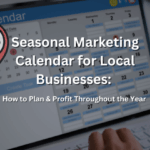Pick up any book on marketing and without fail one of the first chapters is always: identify your dream customer, or write your customer avatar, decide on your audience, etc. Worded many ways, they all have the same idea.
Business owners often ask: “how do I know who my audience is?”
Is it the people that I want most to sell to? Like my dream customer?
Or is it something else?
Let me shed some light on this.
The first thing to know is that your audience are the people who have bought from you in the past, or people who have bought similar products/services from other businesses (your competitors).
That is your audience. They people who have, BY RECORD, bought from you, or your competitors. That is your market, they are your people.
The second thing to know is that this isn’t just ONE type of demographic, or one type of audience.
For instance, if you provided CPR training, your audience is not JUST nurses who need to re-certify. If you dig deeper and see all the people who have come to you to be trained, you’ll see you have several different audiences.
In the case of a CPR instructor, these audiences could be:
- Nurses
- Babysitters
- School teachers
- Personal Trainers
- EMTs
Therefore, it is vital that you do some deep digging in your own records, and then do research on your competitors to see WHO is buying and then craft promotional messages (ads, flyers, etc.), for each one respectively, because each one will require different wording!
But my audience is not so defined
Depending on what service/product you sell, your audience might be a bit more vague.
For instance, if you’re a landscaper, you’re not going to have audiences like ‘nurses’ or ‘teachers’ who ONLY use your services. That doesn’t make sense because all properties need landscaping. In this case your demographic will be wider, and not as niche as the CPR instructor.
Examples for different audiences a landscaper could cater to are:
- Low-income single family homes (lawn care)
- Mid-tier apartment complexes, (commercial landscape maintenance)
- High-income single family homes, gated communities (hardscapes, outdoor living)
Each of the above audiences could be offered all the same service, but the message and the way it is communicated needs to be adjust for each group.






